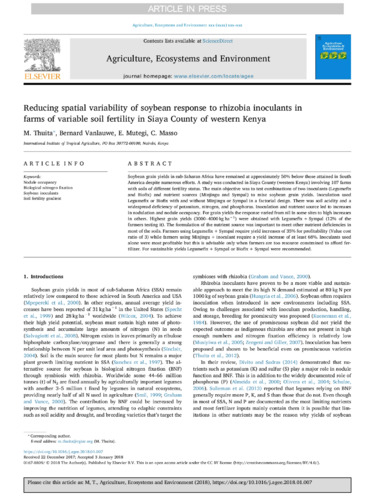Reducing spatial variability of soybean response to rhizobia inoculants in farms of variable soil fertility in Siaya County of western Kenya
Abstract
Soybean grain yields in sub-Saharan Africa have remained at approximately 50% below those attained in South America despite numerous efforts. A study was conducted in Siaya County (western Kenya) involving 107 farms with soils of different fertility status. The main objective was to test combinations of two inoculants (Legumefix and Biofix) and nutrient sources (Minjingu and Sympal) to raise soybean grain yields. Inoculation used Legumefix or Biofix with and without Minjingu or Sympal in a factorial design. There was soil acidity and a widespread deficiency of potassium, nitrogen, and phosphorus. Inoculation and nutrient source led to increases in nodulation and nodule occupancy. For grain yields the response varied from nil in some sites to high increases in others. Highest grain yields (3000–4000 kg ha−1) were obtained with Legumefix + Sympal (12% of the farmers testing it). The formulation of the nutrient source was important to meet other nutrient deficiencies in most of the soils. Farmers using Legumefix + Sympal require yield increases of 35% for profitability (Value cost ratio of 3) while farmers using Minjingu + inoculant require a yield increase of at least 68%. Inoculants used alone were most profitable but this is advisable only when farmers are too resource constrained to afford fertilizer. For sustainable yields Legumefix + Sympal or Biofix + Sympal were recommended.

